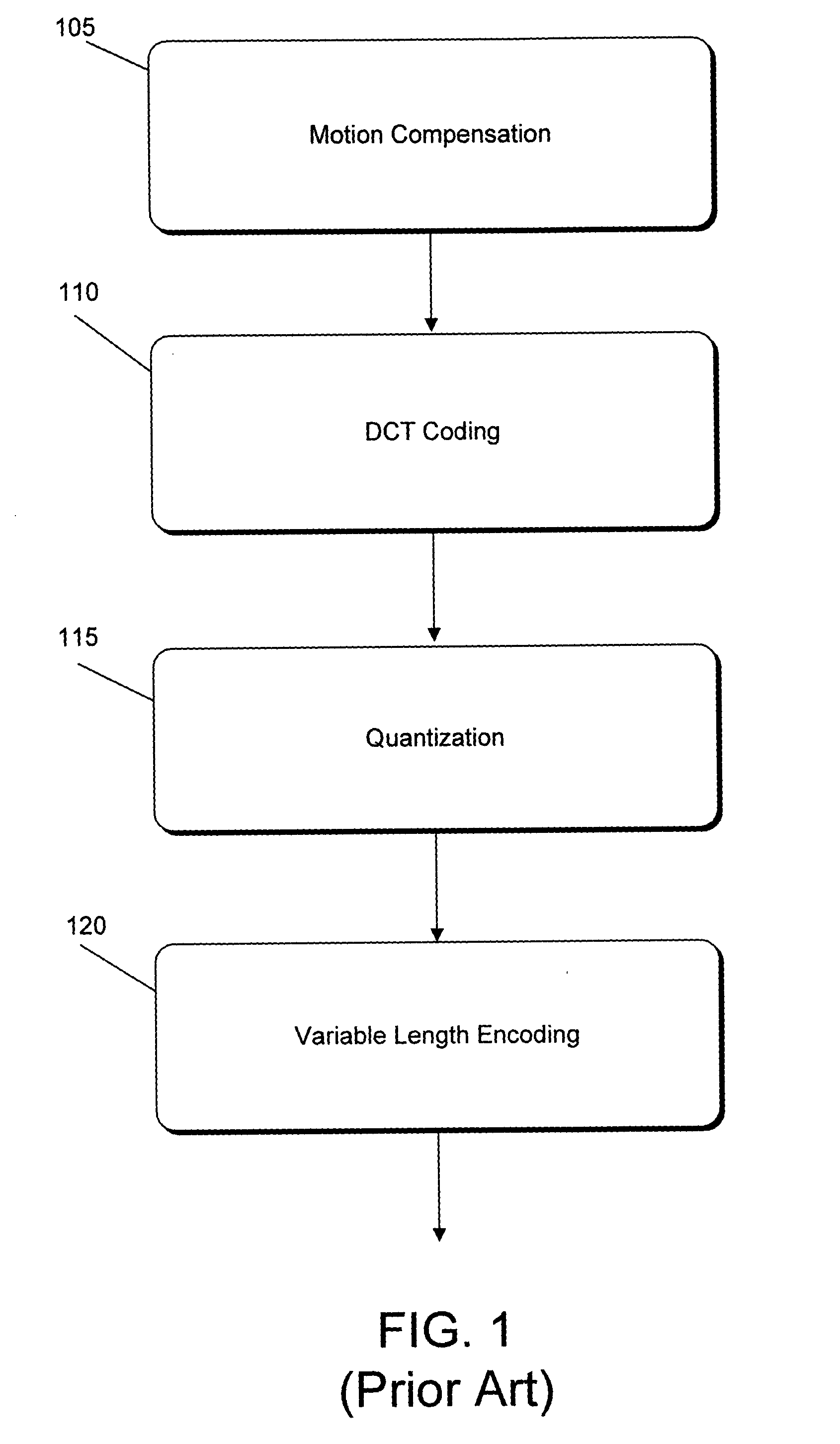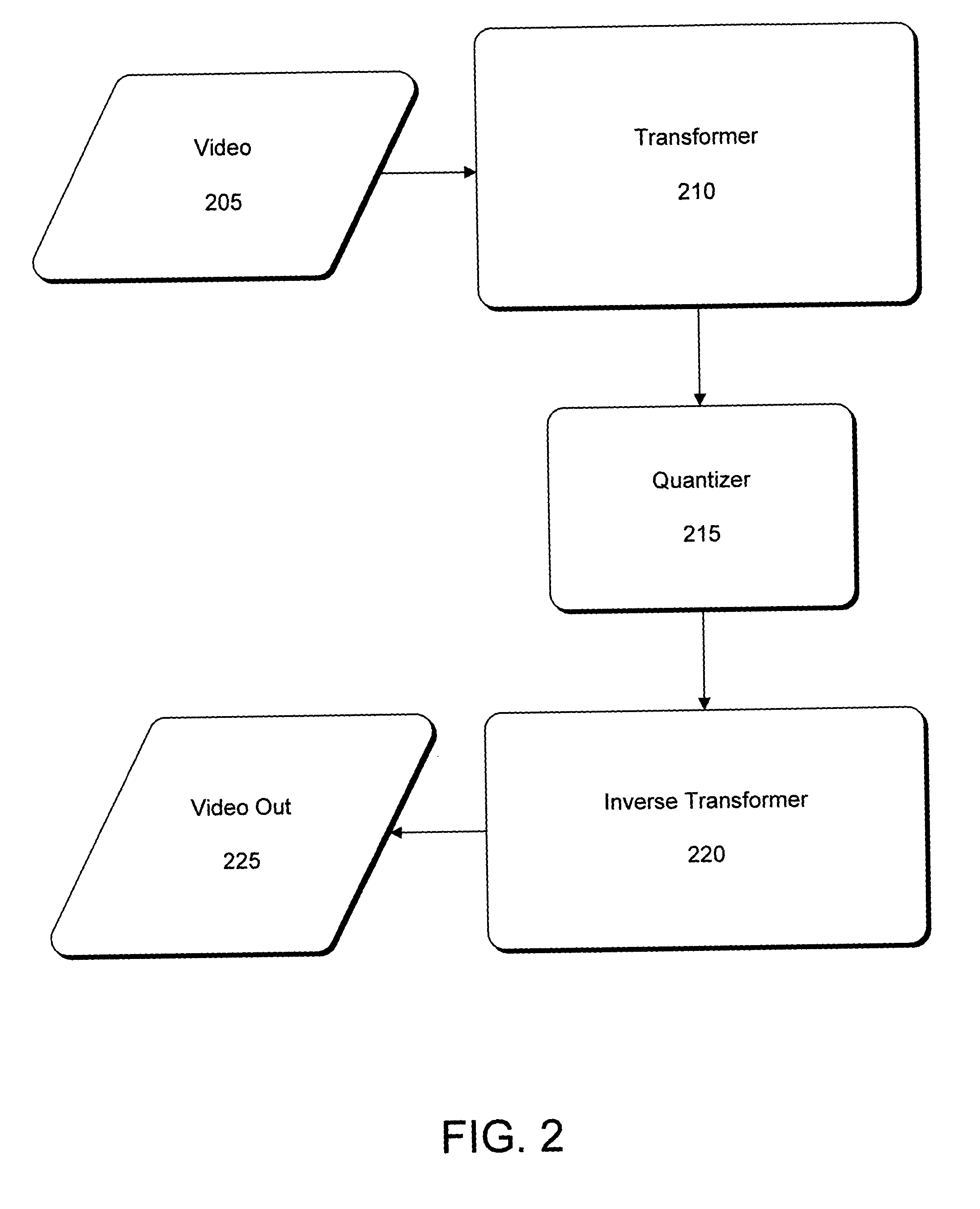Low-complexity 2-power transform for image/video compression
a low-complexity, image-video technology, applied in the field of transforms for image-video compression, can solve the problems of high complexity of dct, unfavorable robust processing, and inability to reduce the total complexity, and achieve the effect of reducing the complexity of d
- Summary
- Abstract
- Description
- Claims
- Application Information
AI Technical Summary
Benefits of technology
Problems solved by technology
Method used
Image
Examples
Embodiment Construction
Example embodiments described herein include a transform matrix having elements composed of 2's low-order power.
Processing for spatial compression for image / video encoding is shown in FIG. 1. Motion compensation 105 predicts values of pixels by relocating a block of pixels from a previous picture. Such motion is described by a 2-dimensional vector or movement from its previous position.
Bit rate reduction in spatial compression is to minimize duplication of data from one picture to the next. Bit rate reduction has generally included transforming video data from the space and time domain to the frequency domain using a DCT encoding method 110, and then applying quantization 115 and variable length coding techniques 120 to reduce the bit rate. More particularly, after DCT encoding 110, the data is subjected to a quantization 115 process, weighted to reduce data in the high-frequency areas. More bits per pixel are used to quantize the important low-frequency coefficients, and fewer...
PUM
 Login to View More
Login to View More Abstract
Description
Claims
Application Information
 Login to View More
Login to View More - R&D
- Intellectual Property
- Life Sciences
- Materials
- Tech Scout
- Unparalleled Data Quality
- Higher Quality Content
- 60% Fewer Hallucinations
Browse by: Latest US Patents, China's latest patents, Technical Efficacy Thesaurus, Application Domain, Technology Topic, Popular Technical Reports.
© 2025 PatSnap. All rights reserved.Legal|Privacy policy|Modern Slavery Act Transparency Statement|Sitemap|About US| Contact US: help@patsnap.com



